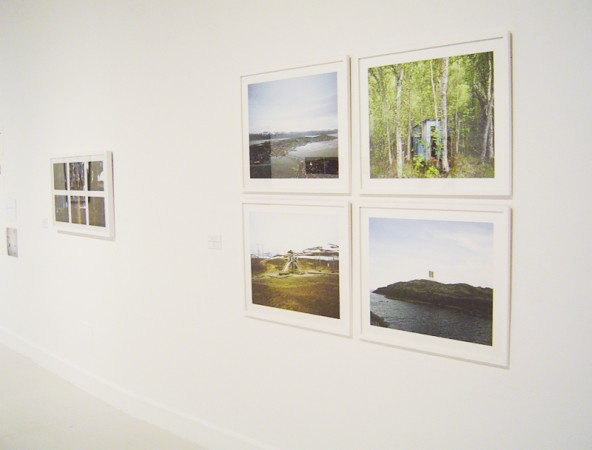Yo no conocía a Nadav Kandler. Sí, había visto los famosos retratos que hizo al equipo de Obama, por lo que, en mi cabeza, ya había pasado a la categoría de fotógrafo de celebridades, con sus repercusiones positivas y negativas. Hace unas semanas, sin embargo, buscando algo completamente diferente, me topé con una imagen que me cautivó. Se trataba de unos bloques de apartamentos blancos fotografiados desde el suelo; en sus terrazas había colgados uniformes de trabajo, de esos naranja chillón, y al fondo, entre la neblina, aparecía la figura de unas grúas portuarias. Me impresionó tanto que, tras visitar la web de Kandler, encargué el libro de inmediato. Llegó la semana pasada.
Esta serie de fotografías fue fruto de varios viajes a China a lo largo de tres años, y recompensada con el premio Pictet, que Nadav Kandler recibió en 2009 de manos de Kofi Annan (ex secretario general de las Naciones Unidas y Premio Nobel de la Paz). El protagonista de la serie es el río Yangtze –el Río Largo, en chino-, que atraviesa China de oeste a este y que es una de las arterías económicas del país. En las orillas de sus 6500 km vive más gente que en los EEUU, y ha sido escenario de toda la Historia de China. Las fotografías muestran cómo el río ha sido convertido en un recurso industrial más, y explotado en consecuencia. Extensiones inmensas de agua, estructuras faraónicas a medio construir y ciudades de hormigón en las que los rascacielos parecen surgir de las aguas mismas del río. En ocasiones, se deja adivinar la presencia de una naturaleza majestuosa de la que ya sólo quedan indicios; lo mismo ocurre con las personas, que suelen aparecer reducidas a pequeñas figuras, como si hubieran quedado ocultas en las sombras de sus propias creaciones. Todo está en construcción, aunque da la impresión de haber sido abandonado hace mucho. Es inevitable hacer un paralelismo con el desarrollo industrial en Europa o América, y cómo la capacidad humana puede de alguna manera perder todo sentido y ahogarse en sí misma. El imparable desarrollo de China, que en Occidente sentimos palpitar desde hace años, se muestra ante el lector en las 76 láminas de esta obra sobrecogedora.
I did not know Nadav Kandler. Yes, I had seen his famous series of portraits of Obama’s political team, so in my head he had the status of celebrity photographer, with its positive and negative connotations. However, a few weeks ago and while looking for something completely different, I came across an image that captivated me. It was two white apartment blocks photographed from the ground; there were bright orange work uniforms hanging from the windows and, in the background, the misty silhouette of some port cranes. I was so impressed after visiting Kandler’s website that I ordered the book at once. It arrived last week.
This series of photographs is the result of several trips to China over three years and it was awarded the Pictet Prize, which Nadav Kandler received in 2009 from Kofi Annan (former secretary general of the United Nations and Nobel Peace Prize laureate). The protagonist of the series is the Yangtze River – the Long River, in Chinese – which runs through China from west to east and is one of the country’s economic arteries. Along its 6500 km there are more people living than in the whole United States, and it has witnessed the entire history of China. In the photographs, you can see how the river has been converted into an industrial resource, and exploited accordingly. The images show vast extensions of water, half-built pharaonic structures and concrete cities whose skyscrapers seem to rise from the very water of the river. Sometimes, one can guess the presence of a majestic nature of which little remains; the same thing happens with people, usually reduced to tiny figures in the photographs, as if they had been hidden in the shadows of their own creations. Everything is under construction, but it gives the impression of having been abandoned long ago. It is inevitable to compare all this with the industrial development in Europe or America, and how human capacity can somehow lose all meaning and drown itself. The unstoppable rise of China, which we have felt palpitating in the West for many years, is shown to the reader in the 76 pictures of this overwhelming work.







